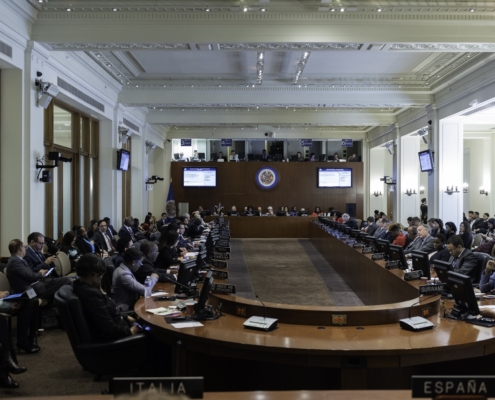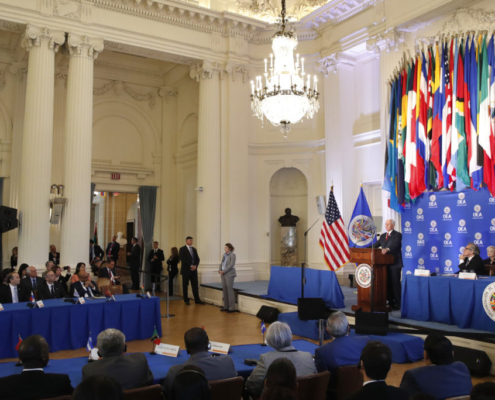Goals and purpose
In the words of Article 1 of the Charter, the goal of the member nations in creating the OAS was “to achieve an order of peace and justice, to promote their solidarity, to strengthen their collaboration, and to defend their sovereignty, their territorial integrity, and their independence.” Article 2 then defines eight essential purposes:
To strengthen the peace and security of the continent.
To promote and consolidate representative democracy, with due respect for the principle of non-intervention.
To prevent possible causes of difficulties and to ensure the pacific settlement of disputes that may arise among the member states.
To provide for common action on the part of those states in the event of aggression.
To seek the solution of political, judicial, and economic problems that may arise among them.
To promote, by cooperative action, their economic, social, and cultural development.
To eradicate extreme poverty, which constitutes an obstacle to the full democratic development of the peoples of the hemisphere.
To achieve an effective limitation of conventional weapons that will make it possible to devote the largest amount of resources to the economic and social development of the member states.
Over the course of the 1990s, with the end of the Cold War, the return to democracy in Latin America, and the thrust toward globalization, the OAS made major efforts to reinvent itself to fit the new context. Its stated priorities now include the following:
Strengthening democracy: Between 1962 and 2002, the Organization sent multinational observation missions to oversee free and fair elections in the member states on more than 100 occasions. The OAS also works to strengthen national and local government and electoral agencies, to promote democratic practices and values, and to help countries detect and defuse official corruption.
Working for peace: Special OAS missions have supported peace processes in Nicaragua, Suriname, Haiti, and Guatemala. The Organization has played a leading part in the removal of landmines deployed in member states and it has led negotiations to resolve the continents’ remaining border disputes (Guatemala/Belize; Peru/Ecuador). Work is also underway on the construction of a common inter-American counter-terrorism front.
Defending human rights: The agencies of the inter-American human rights system provide a venue for the denunciation and resolution of human rights violations in individual cases. They also monitor and report on the general human rights situation in the member states.
Fostering free trade: The OAS is one of the three agencies currently engaged in drafting a treaty aiming to establish an inter-continental free trade area from Alaska to Tierra del Fuego.
Fighting the drugs trade: The Inter-American Drug Abuse Control Commission was established in 1986 to coordinate efforts and crossborder cooperation in this area.
Promoting sustainable development: The goal of the OAS’s Inter-American Council for Integral Development is to promote economic development and combating poverty. OAS technical cooperation programs address such areas as river basin management, the conservation of biodiversity, preservation of cultural diversity, planning for global climate change, sustainable tourism, and natural disaster mitigation.


